Mitsubishi Outlander PHEV
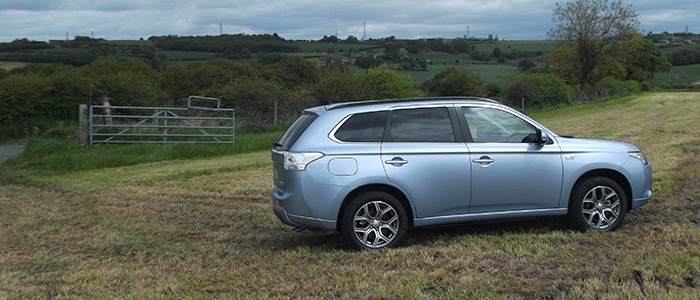
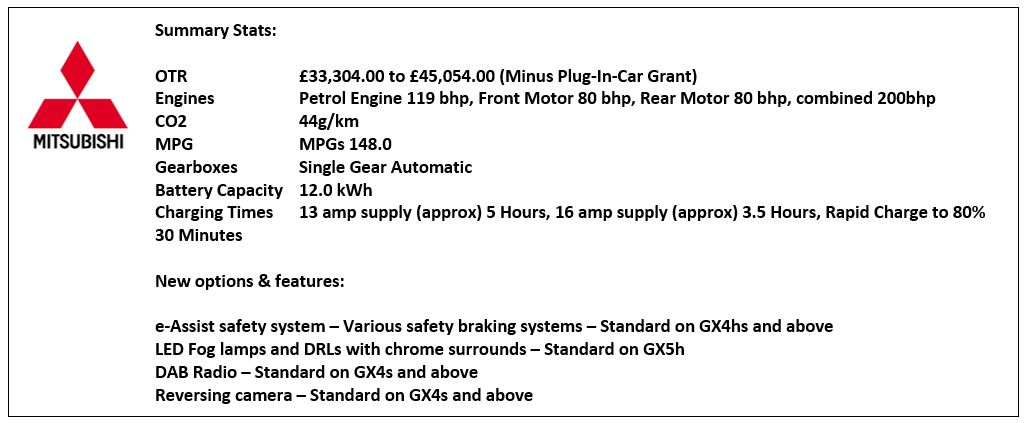
Mitsubishi Outlander GX4h PHEV
The Outlander is unique, no doubt about that, and before driving it, it is hard to work out whether you might like it or not. It is an SUV with plenty of room in the cabin for five adults and a huge luggage area. The rear seats fold almost flat, but are a bit fiddly to put down. You first of all have to lift the seat squab up, and tilt it forward, then fold the back-rest down. But when you have done this, it is van-like in size, it’s enormous.
Another unique feature for the Outlander is that it is a proper 4 wheel drive SUV with 190mm ground clearance, so it will go over lumps and bumps and off-road with confidence. But its biggest unique feature for this type of car is the fact it is a petrol Plug-in-Hybrid-Electric-Vehicle or PHEV for short. It is powered by a 1,998cc petrol engine that produces 119bhp. It accelerates from 0 to 62mph in 11 seconds and has a top speed of 106 mph. The battery pack is rechargeable either from the mains supply or the petrol engine can recharge it whilst running.
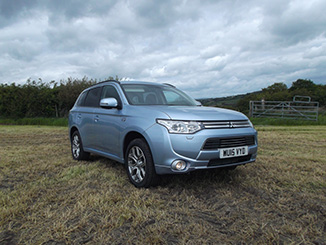
To mains charge the PHEV you can either use the 5 metre charging cable supplied with the car with a three pin plug, or another cable that can be connected to charging stations that are located up and down the country. We chose to charge the Outlander at home, using the three-pin plug. This is somewhat troublesome, as using this method for 2.5 hours only added 8 miles of range to the car, so it would take around 8-hours to get a range of 25 miles. The maximum quoted by the manufacturer is 32.5 miles, but getting this range, we’re told is extremely unlikely.
If you are charging the Outlander at home you really need a wall box, as having to use a plug inside the house is not easy, and if you put the cable through the window, or the door, neither will close, so you have to leave them open, which is not a good idea at night. To add to the difficulties, we are currently having a bit of building work done, so with all the materials laid out on the drive, getting the car close enough to the house was challenging. At one point I thought about using the 4x4 to drive over the rubble, sand, cement and breeze blocks to get close enough to the socket.
There are a variety of buttons in the car, to make it drive in different modes, here are three of them:
1. EV Drive Mode - EV Drive Mode is an all-electric mode in which the front and rear motors drive the vehicle using only electricity from the drive battery. With zero on-road petrol consumption and zero CO2 emissions, the driver can enjoy a quiet and very eco-friendly performance in this mode, subject to weather conditions and the extent to which the car’s heating system and air conditioning are used.
2. Series Hybrid Mode - In Series Hybrid Mode, the petrol engine operates as a generator supplying electricity to the electric motors. The system switches to this mode when the remaining charge in the battery falls below a predetermined level and when more powerful performance is required, such as accelerating to pass a vehicle or climbing a steep gradient.
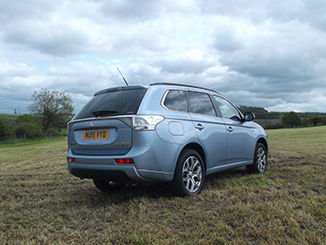 3. Parallel Hybrid Mode - The system switches to Parallel Hybrid Mode when the vehicle reaches high speeds. In this mode the high- efficiency petrol engine provides most of the motive power, assisted by the electric motors as required, such as when more powerful performance is needed to accelerate or climb a slope.
3. Parallel Hybrid Mode - The system switches to Parallel Hybrid Mode when the vehicle reaches high speeds. In this mode the high- efficiency petrol engine provides most of the motive power, assisted by the electric motors as required, such as when more powerful performance is needed to accelerate or climb a slope.
The Outlander PHEV comes with an “ECO Mode” switch that controls electricity and fuel usage for increased efficiency at the touch of a button and an ECO Driving Support System Display that shows just how much energy is being saved on the road. But trying to get the right balance or the best consumption is not easy to determine, but I’m sure the cars systems know what’s going on, even if you don’t. There is also a “save” button which allows the driver to preserve the electricity left in the batteries for use later in the journey and a “charge” button that allows the means the batteries are charged using the petrol engine.
The car is very well equipped with loads of standard equipment; the list is just endless, things such as cruise control, dual zone climate control, leather upholstery on all but the base, 18” alloy wheels. The trim line up is: GX3h, GX4h, GX4hs, GX5h and GX5hs, so plenty of choice, possibly too much.
Prices start from £33,304.00 OTR and go up to £45,054.00 OTR, but the Government £5,000 Plug-In Grant has to be taken off these prices. The car we had on test costs £38,454 .00 OTR, less the grant, due to it being finished in metallic paint.
The Outlander PHEV is on the face of it, quite complicated, not only in terms of technology, but also the complexity of the range, and just trying to work out the price is not easy. The amount of buttons and different ways of driving can also be a bit off-putting. But after a while, reading the literature and owners handbook, it becomes a bit more easy to understand, although after a week, we were still finding things in the car, and different menu’s on the screen, and if we had had it for another week, I’m sure even more features and functions would have been discovered.
If you plugged the car in every night at home for around eight hours, did 24 miles the next day driving on electric power alone, then you would never use any petrol, so the miles per gallon could be 1000+, in theory. But in reality, you would need to use the petrol engine most days for some journeys. During the time we had the car, using both electric and petrol, going around town, and on journeys up and down the M1, the car achieved on average 34.2mpg, according to the on-board computer. This is not as good as an equivalent diesel, but not bad for a 2.0 litre petrol SUV.
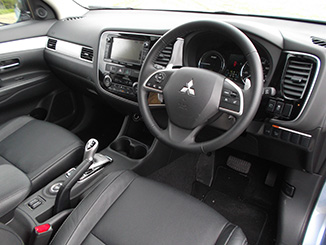 To date Mitsubishi have sold around 10,000 Outlander PHEVs in the UK, so there must be a good reason why so many have been bought. This answer is easy to understand: The PHEV costs around the same as a similar specification diesel Outlander, but the beauty of the PHEV, especially for company car drivers is the fact the CO2 emissions are as low as 44g/km, making BIK rate as low as 5%, a gift and a very cheap car to run in terms of taxation for the driver. And it has all those benefits of its size, 4 wheel drive and a long list of standard equipment.
To date Mitsubishi have sold around 10,000 Outlander PHEVs in the UK, so there must be a good reason why so many have been bought. This answer is easy to understand: The PHEV costs around the same as a similar specification diesel Outlander, but the beauty of the PHEV, especially for company car drivers is the fact the CO2 emissions are as low as 44g/km, making BIK rate as low as 5%, a gift and a very cheap car to run in terms of taxation for the driver. And it has all those benefits of its size, 4 wheel drive and a long list of standard equipment.
It was a pleasant surprise driving the PHEV, it was good to drive, though a bit complicated, the level of quality was good, though not brilliant but the level of equipment was exceptional. Charging was not easy, but admittedly you need a house suited to running electric vehicles. With such a huge tax advantage for the company car driver in terms of BIK, there is a high demand for these new PHEVs. However you have to ask if the demand for used ones will be anywhere near as high? Without a similar tax break, and with the risk that the battery capacity will dwindle over time, what is the advantage of buying a used petrol PHEV? But to sum up it has some very clever technology, is well packaged and all at a good price.
Martin Ward, Manufacturer Relationship Manager
 COMING SOON:
COMING SOON:
- VW Sharan, Hanover – will there be a hangover in Hanover?
- VW Touran, Amsterdam – a drive amongst the tulips
- VW Golf Blue Motion, Amsterdam – not a hill in sight
- Renault Kadjar, Spain – an old codger in Kadjar
- Hyundai Tucson, Nosovice, Czech Republic – check this out
- Volvo XC90, Richmond, Yorkshire - just around the corner
- Vauxhall Viva.. Is it Viva Las Vegas, or Viva Las Luton


